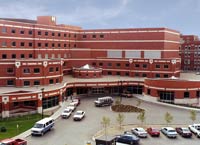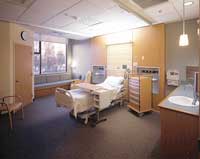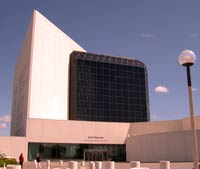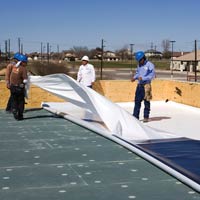view all Case Studies
Chiller Replacement Improves Efficiency, Lowers Costs

Officials at Regina General Hospital look well into the future to provide progressive and innovative care for the people of southern Saskatchewan. A recent expansion and renovation of the hospital has resulted in significant changes, including an emergency ward, an energy center, and a tunnel connecting different buildings.
January 25, 2008 -
HVAC
Officials at Regina General Hospital look well into the future to provide progressive and innovative care for the people of southern Saskatchewan. A recent expansion and renovation of the hospital has resulted in significant changes, including an emergency ward, an energy center, and a tunnel connecting different buildings.
Faced with an aging chiller plant that cost too much to maintain and operate, hospital managers specified new equipment to serve the facility cost-effectively and meet its requirements for the next 25-50 years. A cost analysis of several different systems provided the answer: Two 1,350-ton, dual-compressor centrifugal chillers from McQuay arranged in series counterflow.
“We had been using natural-gas absorption chillers installed in 1977,” says Rick Pearce, the hospital’s chief engineer. “But they had become too expensive to operate and time-consuming to maintain. The price of natural gas alone had gone up 52 percent over the year prior to the project, which made the switch to electricity easier. When we learned that we could save $11.9 million (Canadian) over the life cycle of the equipment – about $500,000 annually – it was an easy decision to make.”
In addition to meeting the long-range goal in terms of life-cycle cost, Saskatchewan Health, the governing body of all health facilities in the province, had another requirement. According to the department’s new policy, all chillers in its health system must use a refrigerant not scheduled for phase-out under the terms of the Montreal Protocol. McQuay chillers use HFC-134a refrigerant, which has no ozone-depletion potential or phase-out schedule.
Completed in 1998, Regina General’s most recent renovation positioned the facility to meet Saskatchewan’s health care needs now and in the future. With low life-cycle cost as a primary requirement, engineer Shawn Lamb conducted a capital and operational cost analysis of bids submitted from several manufacturers.
“We made the final decision based on a total net present value calculation using 2006 dollars,” Lamb says. “This took into account the capital cost of the equipment and 25-year operating costs, assuming maintenance costs are equal.”
Past engineers designed most of the systems as a parallel arrangement. After calculating payback amounts over 25 years, it was apparent the series-counterflow arrangement of the chillers provided the lowest life-cycle costs, Lamb says.
Series-counterflow chiller arrangements are more energy efficient than chillers arranged in parallel series because they allow more efficient operation of each chiller. To achieve 44 degrees supply-chilled-water temperature at Regina General, each chiller needs to produce a chilled-water temperature differential of only 6 degrees. Energy use drops because each chiller produces only a portion of the required differential.
In addition to the series counterflow arrangement, McQuay dual-compressor centrifugal chillers are designed to provide better part-load efficiency. The chiller also can unload smoothly to match the exact building load – down to 5 percent of the full-load capacity without an inefficient hot-gas bypass system.
While single-compressor chillers are most efficient at or near 100 percent capacity and often require hot-gas bypass to unload, a dual-compressor centrifugal chiller is most efficient at 50-60 percent capacity and can unload much further. The dual-compressor centrifugal chillers use two compressors on a common refrigeration circuit, which is the reason for the part-load efficiency gain.
“With the new chillers in place, it’s not only a relief to get away from the high maintenance of the old chillers,” Pearce says. “It’s also satisfying to know that we are keeping our energy costs as efficient as possible. We’re getting much more out of our heating, ventilation and air conditioning system these days.”
Next
Read next on FacilitiesNet












